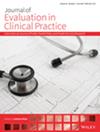Evidence-Based Approaches to Quality Improvement: A Narrative Review of Integrating Bayesian Adaptive Trials Into Health Services
Abstract
Rationale
Quality improvement (QI) in health service programmes aims to make small, incremental changes to increase reach and efficiency. Simple, low-risk programmatic changes can improve services, particularly when supported by robust evidence. However, in health service contexts, there is tension between the need for swift decision-making and the high research standards for conducting methodologically rigorous trials. Randomized trials are rarely used to evaluate these changes due to high costs and long timelines, especially when the changes are expected to result in marginal improvements. Instead, health service programmes frequently introduce changes informed by anecdotal evidence or less robust evaluation methods such as before-and-after comparisons.
Aims
In this paper, we present a narrative review of the concepts underlying Bayesian adaptive trial designs for conducting QI research, highlighting their use in the commercial sector and exploring opportunities for cross-industry learning and future application in healthcare settings.
Methods
Relevant studies were selected based on their contextual relevance to the topic, in keeping with the narrative review approach.
Results
Given that programmatic changes typically yield modest improvements, we recommend that adaptive trial designs can strike a balance between obtaining reliable results and avoiding overly large sample sizes. We review how interim analysis and early stopping can be integrated into trials, allowing the level of rigour to be adjusted according to the proramme specifications.
Conclusion
Adaptive trial designs hold significant promise for enhancing the QI efforts. To ensure that adaptive trial designs can be successfully integrated into health service contexts, tradeoffs should be made between methodological rigour and resource constraints.


 求助内容:
求助内容: 应助结果提醒方式:
应助结果提醒方式:


